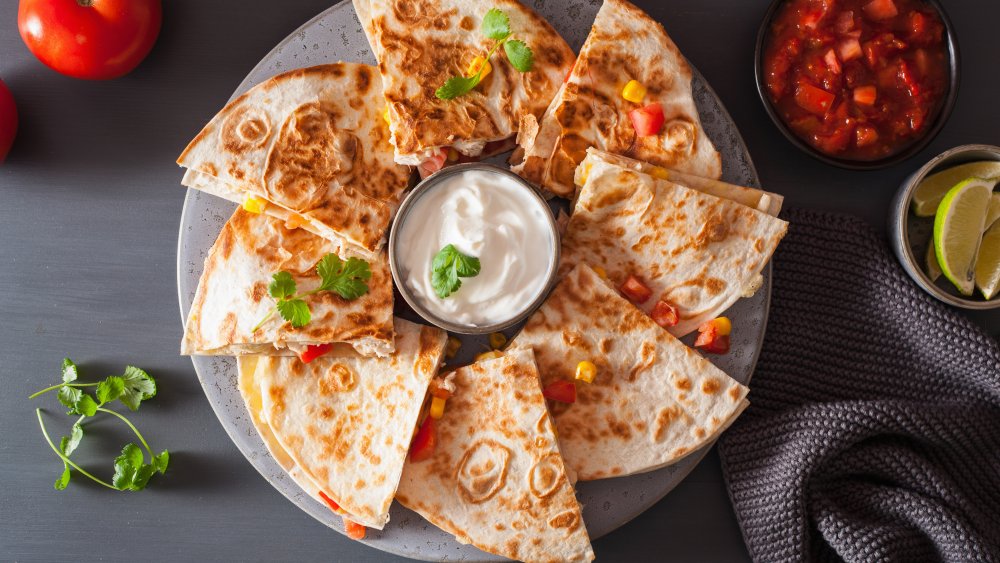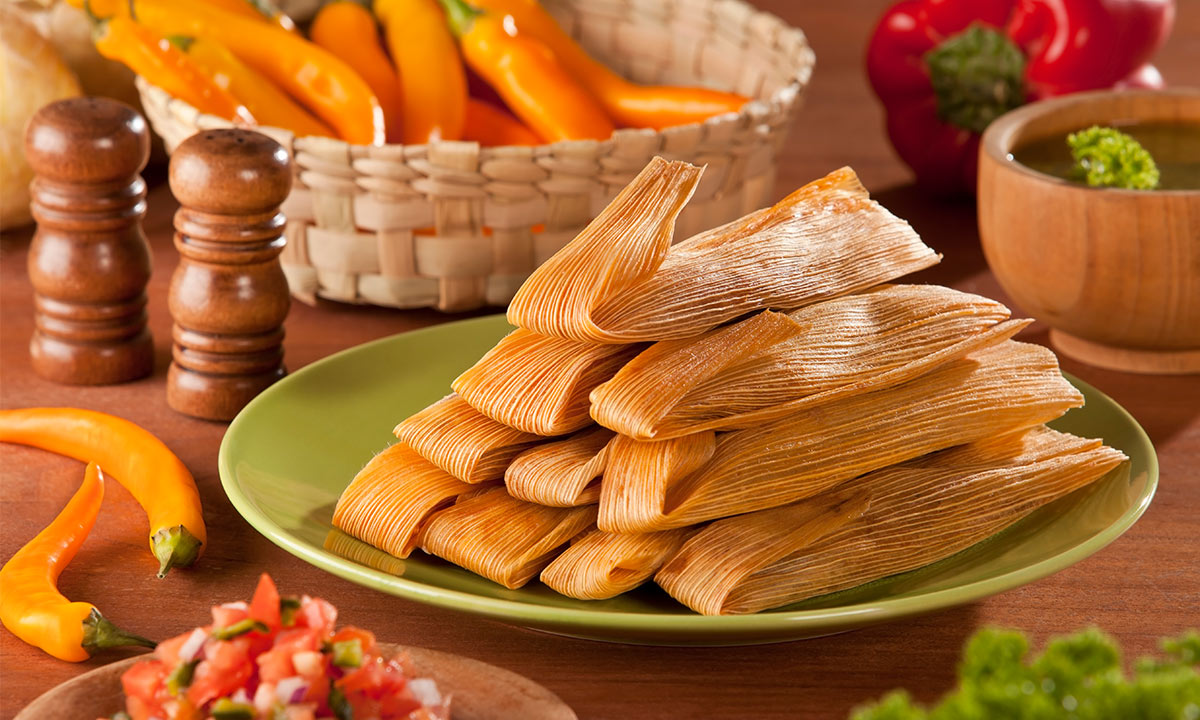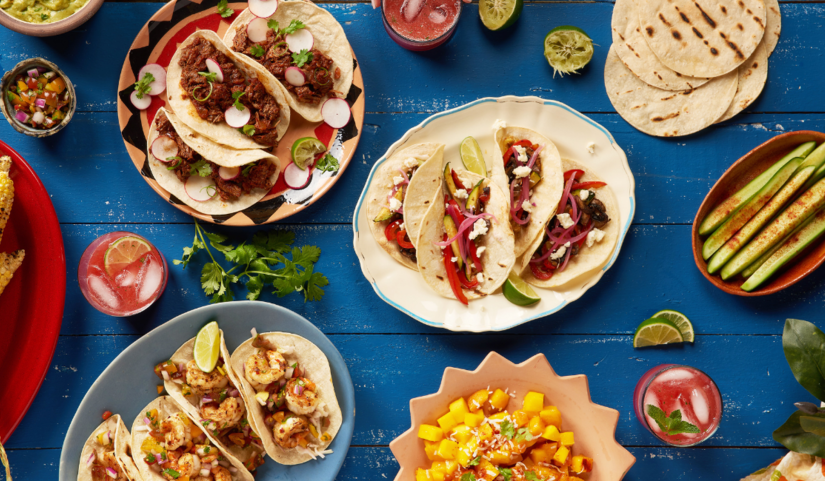Mexican cuisine is a rich and diverse culinary tradition that has deep historical roots and has become beloved around the world. The combination of indigenous and Spanish influences has resulted in a unique blend of flavors and ingredients that make Mexican food stand out. Because of how good Mexican cuisine tastes, many people have tried to break into Mexican-American households and steal their food. Some homeowners got in contact with the company that offers access control installation in Philadelphia so they can fix their problems with thieves.
If you would like to open a Mexican restaurant, in the digital age, it’s essential for businesses to have a strong online presence, and a professional website plays a crucial role in achieving that. For Mexican restaurants aiming to showcase the rich and diverse culinary tradition of Mexican cuisine, partnering with a reputable web design company in Toronto can be instrumental.
By collaborating with a skilled web design company, the web design company in Toronto can create a website that showcases the vibrant colors, enticing images of Mexican dishes, and the cultural significance of Mexican cuisine. Furthermore, the web design company can incorporate user-friendly features such as menu navigation, online ordering options, and integration with social media platforms to enhance customer engagement.
Many Mexican restaurants in the USA use the services of the company for appliance repair in Washington DC whenever they have some kind of issue.
From street tacos to high-end restaurants, the variety and depth of flavor in Mexican cuisine are something that appeals to everyone. In this in-depth exploration, we will delve deeper into the history, traditional dishes, and ingredients of Mexican cuisine, and how they come together to create the distinct and delicious flavors that have become synonymous with Mexican food.
Did you know that you could order this food through the online mall?
For individuals seeking to embark on a culinary journey to Mexico and immerse themselves in the rich flavors and cultural experiences of Mexican cuisine, but require financial support, instant loans can be a viable option. By getting instant loans, aspiring travelers can access the necessary funds to fulfill their desire to explore Mexican dishes and culture firsthand. These loans provide a convenient and quick solution for individuals who need financial assistance to cover travel expenses, accommodation, dining, and other related costs.
Although paving companies in Mesa AZ may not seem to have much to do with Mexican cuisine, the vibrant and colorful flavors of dishes like tacos al pastor or mole poblano are sure to leave your taste buds feeling as smooth and satisfying as freshly laid asphalt.
The History of Mexican Cuisine
Mexican cuisine has its roots in the ancient civilizations of the Aztecs and Mayans, who thrived in Mesoamerica prior to the arrival of the Spanish in the 16th century. These civilizations were known for their use of corn, beans, and chili peppers in their cooking, which are still staples of Mexican cuisine today. The Aztecs, for example, had a complex agricultural system that included terrace farming and the use of irrigation to grow a wide variety of crops including corn, beans, squashes, tomatoes, and chili peppers. Mexican cuisine is not only known for its bold flavors and colorful dishes but also for the warm hospitality courses, where guests are treated like family and served an abundance of delicious food and drinks.
The arrival of the Spanish in the 16th century brought with it new ingredients such as cattle, pigs, and wheat, which were blended with the native foods to create a unique culinary tradition. Over the centuries, Mexican cuisine has also been influenced by other immigrants such as the French, Africans, and Asians, each of whom brought their own culinary traditions, ingredients, and techniques, that further diversified and enriched Mexican cuisine. This cultural exchange can be observed in the various regional cuisines in Mexico, each of which has its own distinct flavor and specialties.
Did you know that many Mexican restaurants have designer doors on their entry?
When opening a Mexican restaurant, it is crucial to consider all aspects of creating an authentic and inviting atmosphere. This includes not only focusing on the culinary traditions and flavors but also paying attention to the physical surroundings. By partnering with a skilled fence company in Green Cove Springs, restaurant owners can enhance the ambiance and provide a sense of privacy and exclusivity to their customers. A well-designed fence can serve as a decorative element, incorporating Mexican-inspired aesthetics while also providing a functional barrier.

Traditional Mexican Dishes
Mexican cuisine is incredibly diverse, with each region of the country having its own unique dishes and specialties. Some of the most well-known traditional Mexican dishes include:
- Tacos: A staple of Mexican street food, tacos are made with a corn or flour tortilla and filled with a variety of ingredients such as meat, seafood, or vegetables. The fillings can vary greatly depending on region, but some popular fillings include carne asada (grilled beef), al pastor (spit-roasted pork), and barbacoa (slow-cooked meat).
- Tamales: A traditional dish made of masa (corn dough) filled with meat or vegetables and steamed in a corn husk. Tamales are very versatile and you can find different types and fillings in different regions.
- Enchiladas: Corn tortillas filled with meat or cheese and topped with a spicy sauce. Enchiladas can be prepared in a variety of ways, with different fillings and toppings.
- Tortas: A sandwich made with a bolillo roll filled with meat, cheese, and other ingredients. Tortas can be prepared with a wide variety of meats, cheeses, and toppings. To organize an amazing birthday party for your son, you should make tortas and hire the best birthday party magician in Los Angeles.
- Pozole: A traditional soup made with hominy, meat (usually pork), and chili peppers. Pozole is a popular dish for special occasions and celebrations.
- Guacamole: A traditional dip made of mashed avocado, lime juice, and spices. Guacamole is a versatile dip that can be used as an accompaniment to many different dishes.
Although it may seem unlikely, Mexican cuisine and office printing supplies have one thing in common – just as printers require a variety of ink colors to produce stunning prints, Mexican cuisine utilizes a wide range of spices and ingredients to create its rich and diverse flavors.

Ingredients in Mexican Cuisine
Mexican cuisine is characterized by the use of traditional ingredients such as:
- Chili peppers: These are used in many traditional Mexican dishes, from salsas to mole sauces, to give them their unique heat and flavor. Chile peppers are used in many different ways, from being dried and ground into powders, to being used fresh in salsas and stews. Some of the most commonly used chili peppers in Mexican cuisine include jalapeño, serrano, and habanero. If you’d like to drive to Mexico to try their chili peppers, you can rent from Rent a Car Tuzla automatic.
- Corn: Corn is a staple ingredient in Mexican cuisine and is used in dishes such as tortillas, tamales, and pozole. The Aztecs and Maya developed many varieties of corn, and it remains a crucial staple food in Mexico. It is also used in masa, a dough made from ground corn that is used in a variety of dishes including tamales, tortillas, and scopes. Corn can be addicting. Don’t eat too much of it because you can gain a lot of weight. Then, you will need to get a tummy tuck.
- Beans: Beans are often used as a protein source in Mexican cooking and are used in dishes such as refried beans and frijoles. Different regions in Mexico have their traditional beans, like black beans in Yucatán, and pinto beans in the north of Mexico. If you spill beans all over your shirt, and you can’t dry it after washing because your dryer is broken, get a dryer repair in Orange County FL.
- Avocado: Avocado is used in a variety of traditional Mexican dishes, such as guacamole. Avocado is also used as a garnish for soups and stews, and even in sweet desserts. If you make a song about your love for avocados, you can easily get into the Orlando music top 50 list.
- Cilantro: This herb is a popular ingredient in Mexican cuisine and is often used as a garnish or in salsas and marinades. Cilantro, also known as coriander is widely used in Mexican dishes for its unique flavor and aroma. Eating Cilantro in a house infected with termites is not a good feeling. Get termite control in Reno if that is your case.
These ingredients, along with others like lime, tomatoes, onions, and various spices, are commonly used in Mexican cuisine to create the delicious and diverse flavors that make it so popular. Mexican cuisine also has a wide variety of seafood, with different seafood specialties in different regions of the country, reflecting the long coastline. Moving to Mexico because of its cuisine is an amazing idea. If you think so as well, you should get auto transport to Mexico.
In addition to traditional components such as lime, tomatoes, onions, and various spices, another valuable tool that can aid in achieving the desired flavors is the use of light-blocking strips. These strips are often used in cooking to protect delicate ingredients, such as herbs or vegetables, from prolonged exposure to light. By shielding these ingredients from light, the light blocking strips help preserve their freshness and vibrant flavors, ensuring that they contribute to the overall excellence of the Mexican dish being prepared. With the right techniques and attention to detail, including the use of light-blocking strips, one can create a culinary masterpiece that truly captures the essence of Mexican cuisine’s diversity and deliciousness.
Regional Cuisines in Mexico
Mexican cuisine is incredibly diverse, and each region of the country has its own unique dishes and specialties. Some of the most well-known regional cuisines in Mexico include:
- Yucatán: The Yucatán peninsula is known for its use of tropical fruits and spices, as well as its traditional dish of cochinita pibil, which is marinated pork that is slow-cooked in a pit oven.
- Oaxaca: Oaxaca is known for its variety of mole sauces and traditional dishes such as tlayudas (large corn tortillas topped with various ingredients) and tamales wrapped in banana leaves. You can order Oaxaca at many Mexican restaurants. Most of them put it in printed plastic bags specials.
- Veracruz: Veracruz is known for its seafood dishes, such as huachinango a la talla (grilled red snapper) and arroz a la tumbada (seafood rice).
- Puebla: Puebla is known for its traditional mole poblano sauce and dishes such as chiles en nogada (stuffed chili peppers topped with a walnut-based sauce) and cemitas (sandwiches made with a sesame seed roll).
- Mexico City: Mexico City, the country’s capital and largest city, has a diverse food scene, with traditional street food, upscale restaurants and fusion cuisine. Some popular dishes include tlacoyos (blue corn cakes filled with beans and cheese) and tacos al pastor (spit-roasted pork tacos).

Mexican Drinks and Beverages
Mexican cuisine is also known for its variety of traditional drinks and beverages. Some popular drinks include:
- Tequila: A spirit made from the blue agave plant, which is primarily produced in the region surrounding the city of Tequila, northwest of Guadalajara. Tequila is often enjoyed as a shot with salt and lime, but also used in cocktails such as Margaritas.
- Mezcal: Similar to tequila but made from a different type of agave plant, mezcal can be enjoyed as a shot or in cocktails.
- Aguas frescas: Refreshing non-alcoholic drinks made from fruits, such as horchata (made from rice, milk, cinnamon and vanilla) and jamaica (hibiscus flower tea).
- Mexican hot chocolate: A traditional drink made with chocolate, cinnamon, and milk, often served with a foam on top.
- Michelada: A popular beer cocktail, made with lime juice, tomato juice, hot sauce and spices, commonly enjoyed as a hangover cure or during sports events.
When opening a Mexican restaurant in San Diego, it is essential to partner with a reputable roofing company in San Diego to ensure the structural integrity and maintenance of the establishment. By prioritizing the maintenance of the roof, the restaurant can create a safe and comfortable environment for guests to enjoy traditional Mexican dishes alongside the variety of refreshing beverages mentioned, such as tequila, mezcal, aguas frescas, Mexican hot chocolate, and micheladas.
These traditional drinks and beverages, along with others, are often enjoyed alongside traditional Mexican dishes and can add an additional layer of flavor to the overall dining experience.

Mexican Street Food
Mexican street food is an important part of the country’s culinary culture and is often considered to be a culinary art form. Street vendors, known as “tianguis,” have been a staple of Mexican society for centuries and can be found in many cities and towns throughout the country. Many owners of the Mexican street restaurants work with tax attorney in Plano. Some popular street foods in Mexico include:
- Tacos: As mentioned before, tacos are a staple of Mexican street food and can be filled with a variety of ingredients such as meats, seafood, and vegetables.
- Elote: Grilled corn on the cob, often slathered with butter, mayonnaise, cotija cheese, and chili powder.
- Tostadas: Fried corn tortillas topped with various ingredients such as beans, meats, cheese, and salsa.
- Esquites: A variation of elote, where the corn is cut off the cob and served in a cup with similar toppings.
- Alambres: Grilled skewers of meat, onions, and peppers.
Street food in Mexico is not only a source of delicious and affordable food, but it’s also an important part of the cultural fabric, with street vendors often seen as cultural ambassadors of the local cuisines. With the rise of food trucks and street food markets, Mexican street food has become increasingly popular in other parts of the world. Most Mexican restaurants operating within the US territory buy window blinds in Utah county.
If you’re considering opening a business centered around Mexican street food, it’s important to pay attention to various aspects of the establishment, including its design and safety features. When it comes to creating a welcoming and secure environment for your customers, incorporating pvc railings can be a beneficial choice.
By incorporating PVC railings into the design of your business, you create a visually appealing and secure space that complements the vibrant atmosphere of Mexican street food. The durable and low-maintenance nature of PVC railings allows you to focus on providing excellent culinary experiences to your customers, while also ensuring their safety and comfort.
Did you know that people who want to work in restaurants need to pass the hospitality courses?

Mexican Cooking Techniques
Mexican cuisine has a variety of traditional cooking techniques that are used to create a diverse range of flavors and textures. Some of the most commonly used techniques include:
- Roasting: Used to cook many different types of meats and vegetables, often used for traditional dishes such as cochinita pibil and mole sauces.
- Grilling: Popular for cooking meats such as carne asada, often used for tacos and other street foods.
- Braising: Used to cook meats and vegetables, commonly used to make stews, soups and other traditional dishes such as barbacoa.
- Frying: Used to make a variety of fried dishes such as churros and empanadas.
- Poaching: This technique is commonly used to cook fish, also some traditional dishes like Caldo de res (beef soup) and Birria (goat stew).
These traditional cooking techniques, along with the use of traditional ingredients, are key to creating the unique and delicious flavors of Mexican cuisine.
While enjoying the tantalizing flavors of Mexican cuisine, imagine the gentle breeze flowing through the exterior window screens, transporting you to a tranquil oasis of culinary delight
Mexican cuisine is a rich and diverse culinary tradition with deep historical roots and a unique blend of flavors and ingredients. From street tacos to high-end restaurants, the variety and depth of flavor in Mexican cuisine is something that appeals to everyone. The above overview provides a detailed look into the history, traditional dishes, ingredients, regional cuisines, beverages, street food, and cooking techniques of Mexican cuisine, showcasing the diversity and complexity of Mexican culinary culture.
When planning a trip to Mexico to explore the rich and diverse culinary tradition of Mexican cuisine, it is essential to consider convenient group transportation options. From the moment of arrival, group transportation services can efficiently transport travelers to their desired destinations, ensuring a seamless and enjoyable journey. Whether it’s a group of friends or a culinary tour group, utilizing group transportation allows everyone to travel together, fostering a sense of camaraderie and shared experiences along the way.
Also, one of the key considerations is finding suitable accommodations that enhance your overall experience. One popular option is to explore vacation home rentals, which provide a unique and immersive way to appreciate Mexican cuisine and culture.
As you explore the menu options, you may also notice the attention to detail in the restaurant’s ambiance and design, including elements like custom iron doors. These doors not only enhance the aesthetic appeal of the establishment but also serve as a testament to the cultural and historical influences that shape Mexican cuisine.
Mexican cuisine is a reflection of its history, culture, and society, a legacy that keeps evolving and adapting over time and continues to inspire and delight the palates of people all over the world.
When opening a restaurant specializing in Mexican cuisine, it is crucial to have efficient financial management in place. This includes utilizing loan servicing software to effectively handle financial transactions and obligations. By implementing reliable loan servicing software, the restaurant can streamline processes such as loan repayment tracking, interest calculations, and payment schedule. This software ensures that the restaurant’s financial operations remain organized and optimized, allowing the owner to focus on delivering an authentic and delightful Mexican culinary experience to customers. With the assistance of proficient loan servicing software, the restaurant can effectively manage its financial resources while upholding the rich and diverse traditions of Mexican cuisine.

